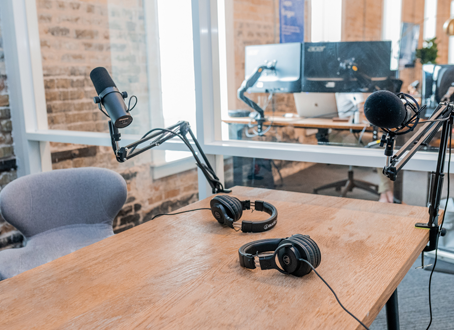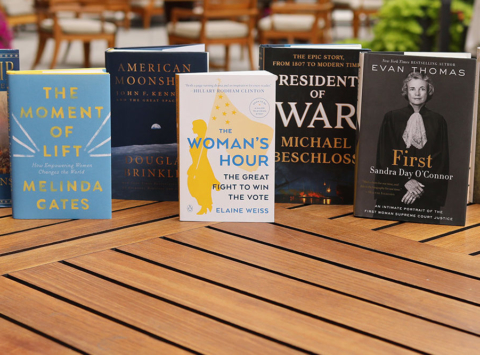I remember the day my daughters discovered I had a profile on
Wikipedia. It was as though I had somehow risen to a whole new level of relevance
in their eyes. Even at their young age then, they had been true champions of my
work and, as their mom, I knew they were proud of my accomplishments. But that
day, as my youngest daughter gushed: “Mom, now you are part of history!” it
occurred to me at that moment—it isn’t necessarily what we do, but rather where
and how it is recorded that can change perceptions and open minds.
Today, Wikipedia has over 18 billion pageviews per month, making
it one of the most visited websites in the world. There are those of us who use
it routinely, and some who access it daily. Yet, only 18 percent of the 1.6
billion Wikipedia biographies in the English language are about women. Clearly,
this has an impact on the results that we get when we access Wikipedia and can
shape the way we see the world.
It is no longer a secret that the contributions of women have
simply been left out of much of our history. Too often, the story of women in
numerous fields were simply either never written or left on the cutting room
floor. Using today’s parlance, one could even go so far as to say in some
cases, the history that was recorded and documented is “fake news” because too
often it is an incomplete or distorted picture of who did what.
The time has come to commit ourselves to the diligent effort of
finding and spotlighting the stories of leaders and innovators, no matter their
gender, to ensure that history and the news stories we see every day are true
reflections of how we got to now, and who played a role along the way. It is
for this reason that the Case Foundation is proud to support
the Smithsonian American Women’s History Initiative, Because of Her Story, which
is spearheading an effort to ensure the untold stories of women pioneers and
trailblazers that shaped American society and changed the course of American
history are given a proper place across all of
the Smithsonian museums, exhibits and digital properties. My husband,
Steve, Chairman of the Case Foundation, has long been active in the
Smithsonian, now serving as Vice Chair of the Smithsonian’s Board of Regents,
and has long been a champion of the Smithsonian’s efforts to incorporate a digital-first
approach to increase their impact and reach 1 billion people a year. This initiative
incorporates this thinking as it will launch one of its most extensive digital
undertakings to document, research, collect, display and share the rich,
complete and compelling story of women in America.
This initiative shows the Be
Fearless principles at work as the Smithsonian makes a Big
Bet—pioneering a new way of illustrating women’s pivotal roles in American
society through a digital-first approach. We know the power of technology to
break down barriers and are excited to support the Smithsonian as
they roll out new ways to share the stories of women across
the Smithsonian network. This effort will create new avenues for
telling stories and add further fuel to the Smithsonian’s initiative to
reach 1 billion people annually by 2020.
Of course, the digital work will be supported by multiple
traditional exhibits at the Smithsonian and we have already seen a
number of exhibits open with a focus on the role women are playing, including
the National Portrait Gallery’s Votes for Women: A Portrait of Persistence, which
shines a light on the more than 80-year movement for women to obtain the right
to vote as part of the larger struggle for equality that continued through the
1965 Civil Rights Act and today.
No matter the medium, we look forward to supporting
the Smithsonian as they kick off this extraordinary effort, increasing
their ability to bring stories of women to the forefront and—we hope—inspiring
other institutions to also make a commitment to ensure the roles of women in
history, science, art and all historical narratives are front-and-center.
I so strongly support this powerful new effort being undertaken at the Smithsonian that I have also agreed to co-chair, along with Smithsonian Chairman David Rubenstein, the institution’s American Women’s History Initiative National Advisory Committee, representing a committed group of leaders who will bring outside guidance and inspiration for the Smithsonian as they embark on this effort. I am excited about the people joining me and David for this work with the Smithsonian and the impact we will be able to make. All of us believe the incorporation of more stories of women is integral to understanding our history and setting examples and role models for this generation and for all those who follow in our footsteps.
Through all of these efforts, it is clear that the scale of
stories that need to be unearthed and lifted up is enormous. Yet it is also
matched with an unbelievable commitment and interest in ensuring that history
at the Smithsonian includes “her story.” We look forward to working with
the Smithsonian and to having you join us online and at
the Smithsonian to celebrate the fair and equal inclusion of women
into the narratives that are so central to our understanding of ourselves, our
society and our country.





